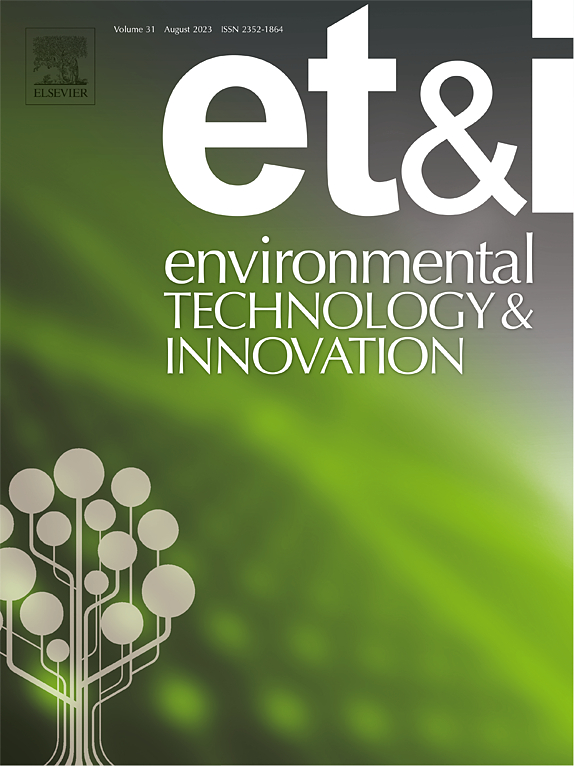Biodegradation of various phthalic acid esters at high concentrations by Gordonia alkanivorans GH-1 and its degradation mechanism
IF 6.7
2区 环境科学与生态学
Q1 BIOTECHNOLOGY & APPLIED MICROBIOLOGY
引用次数: 0
Abstract
Dibutyl phthalate (DBP) is one of the most widely used phthalic acid esters (PAEs) and can easily be released into the environment and food, posing a significant threat to food safety and human health. In this study, Gordonia alkanivorans GH-1, which was previously isolated from fermented Pixian Doubanjiang in the laboratory, could effectively degrade various PAEs at high concentrations within 48 h, with the degradation efficiency of 2000 mg/L DBP reaching as high as 93.14 % under optimal degradation conditions. Furthermore, the biodegradation mechanism of DBP by strain GH-1 was explored using GC-MS and genomics technology, and the expression of key genes was validated through RT-qPCR. A novel carboxylesterase gene (est1833) was successfully cloned and expressed and the recombinant strain Escherichia coli BL21-p28a-est1833 was demonstrated the capability to degrade DBP. The interaction mechanism between the Est1833 and DBP was predicted by structural modeling and molecular docking. In summary, these findings enhance the understanding of the molecular mechanism of DBP biodegradation by G. alkanivorans GH-1 while providing a scientific foundation for future applications in environmental and food bioremediation.
求助全文
约1分钟内获得全文
求助全文
来源期刊

Environmental Technology & Innovation
Environmental Science-General Environmental Science
CiteScore
14.00
自引率
4.20%
发文量
435
审稿时长
74 days
期刊介绍:
Environmental Technology & Innovation adopts a challenge-oriented approach to solutions by integrating natural sciences to promote a sustainable future. The journal aims to foster the creation and development of innovative products, technologies, and ideas that enhance the environment, with impacts across soil, air, water, and food in rural and urban areas.
As a platform for disseminating scientific evidence for environmental protection and sustainable development, the journal emphasizes fundamental science, methodologies, tools, techniques, and policy considerations. It emphasizes the importance of science and technology in environmental benefits, including smarter, cleaner technologies for environmental protection, more efficient resource processing methods, and the evidence supporting their effectiveness.
 求助内容:
求助内容: 应助结果提醒方式:
应助结果提醒方式:


